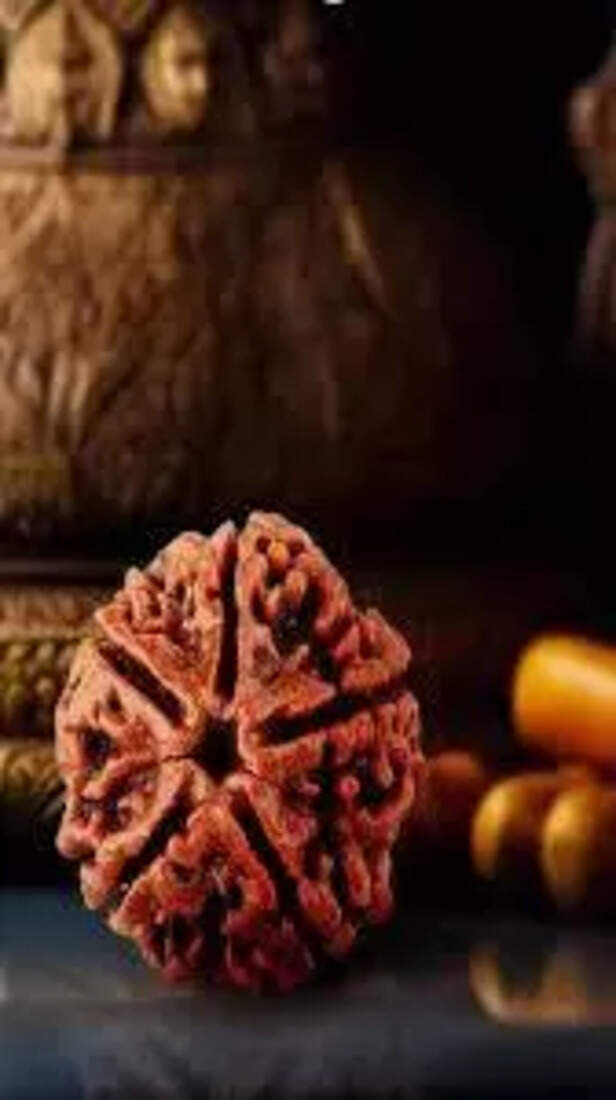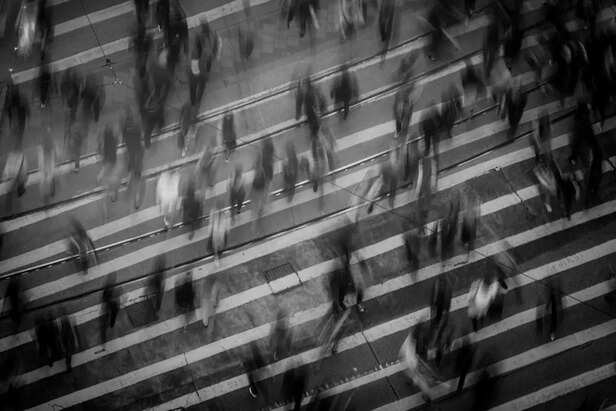You Know Shiva’s Third Eye—But Do You Know the Power of His Tears?
Shivika Gupta | Apr 15, 2025, 19:31 IST
Devon ke Dev Mahadev.
( Image credit : Times Life Bureau )
What happens when the most powerful being in the cosmos chooses to feel? The universe held its breath. The Tear That Wasn’t Just Water A single tear escaped the eye of Mahadev. But this was not just any tear. It was not made of salt and water. It carried the weight of lifetimes, the sorrow of a thousand worlds, and the healing of a million souls. As it journeyed from Shiva’s eye to the earth, the tear carried an intention—a blessing encoded in emotion. It didn’t fall aimlessly. It chose its spot. And when it touched the soil, the first Rudraksha tree was born.
We all know the image—Shiva, seated in meditation, blue-skinned and calm, yet holding a power so immense it could destroy the universe with a glance. His third eye is legend: a symbol of awakening, insight, and destruction. But there’s another side to him—less fierce, more fragile. A side the world doesn’t speak of enough.In an era where tears are seen as weakness and suppression is seen as strength, Shiva’s tears carry a lesson we’ve forgotten. This is not just mythology. It’s a blueprint for emotional courage, spiritual growth, and inner peace.

According to ancient scriptures, the Rudraksha—those small, often brown beads used for meditation—were born from Shiva’s tears. When Shiva meditated for the well-being of all beings, he became overwhelmed with compassion. As a tear dropped from his eye and touched the Earth, it sprouted into the Rudraksha tree.
It wasn’t rage that gave birth to Rudraksha.
It wasn’t destruction.
It was divine sorrow. Love. Empathy.
And that alone flips the narrative. The most feared and revered deity in Hinduism—the Mahadev—cried. And in that moment, he gave the world a symbol not of his wrath, but of his protection.
 In a world that teaches us to hold it all in, Shiva shows us the opposite.
In a world that teaches us to hold it all in, Shiva shows us the opposite.
We fear our feelings, hide our heartbreaks, and suppress pain as if it’s shameful. We tell boys not to cry. We call people “too sensitive.” And yet, here is a god, arms covered in ash, trident in hand, capable of ending time itself—and even he allowed himself to feel.
The Rudraksha is not a warrior’s weapon. It’s a spiritual sponge—absorbing pain, calming the mind, protecting the heart.
We’ve been glorifying the third eye—the destroyer of illusion—but we’ve ignored the tear, the carrier of truth.

Spirituality often meets science at crossroads people don’t expect. Rudraksha beads are more than symbolic—they’ve been studied for their bioelectric and electromagnetic properties.
Some scientific findings suggest:
Every Rudraksha bead tells the story of a god who felt deeply and didn’t fear it.

Let’s face it—today’s world is loud, chaotic, and numb. We post about mindfulness, but scroll endlessly. We chase productivity, but forget presence. We meditate, but resist emotion. And in this noise, we forget what it means to simply feel.
Shiva’s tears weren’t noise. They were silence speaking volumes.
They remind us that spiritual awakening isn’t always fireworks and breakthroughs. Sometimes, it’s sitting with yourself when your heart aches. Sometimes, it’s crying—alone, unheard—and still finding meaning in the mess.
We don’t wear Rudraksha just to chant mantras. We wear it to remember: Feeling is sacred. So is healing.

Every bead, every face (or “mukhi”) of the Rudraksha, has meaning. They’re said to represent different forms of Shiva and carry specific vibrations.
Not rage.Not pride. But a god’s honest tears.

So what does all this mean for you and me?
We’re not gods. We’re barely surviving work, traffic, heartbreak, and burnout. But maybe that’s exactly why we need to remember the Rudraksha story now more than ever.
Here’s what it teaches us:
If Shiva can cry for the world, so can you—for yourself, your losses, your grief. It’s not weakness. It’s release.
Strength is not about never falling. It’s about rising, with kindness toward your own pain.
In a world of distractions, wear something sacred. A bead, a reminder, a promise to yourself.
Shiva let the tear fall. He didn’t hold it back. He let it transform. You can, too.
Awareness without compassion becomes arrogance. Feelings without clarity become chaos. We need both. Just like Shiva.
We chase the extraordinary in life. Superpowers. Manifestation. Third eyes opening. But sometimes, the most divine moment is when your eyes close… and a single tear falls—not from pain alone, but from realizing you’re finally letting go.
You’re not broken. You’re awakening. And in that moment, you’re not just a seeker.
You’re Shiva in human skin.
Explore the latest trends and tips in Health & Fitness, Travel, Life Hacks, Fashion & Beauty, and Relationships at Times Life!
The Tear That Became a Talisman

Serene Shiva .
( Image credit : Times Life Bureau )
According to ancient scriptures, the Rudraksha—those small, often brown beads used for meditation—were born from Shiva’s tears. When Shiva meditated for the well-being of all beings, he became overwhelmed with compassion. As a tear dropped from his eye and touched the Earth, it sprouted into the Rudraksha tree.
It wasn’t rage that gave birth to Rudraksha.
It wasn’t destruction.
It was divine sorrow. Love. Empathy.
And that alone flips the narrative. The most feared and revered deity in Hinduism—the Mahadev—cried. And in that moment, he gave the world a symbol not of his wrath, but of his protection.
Why Do We Fear Emotion?

Shiva's Serene Awakening.
( Image credit : Times Life Bureau )
We fear our feelings, hide our heartbreaks, and suppress pain as if it’s shameful. We tell boys not to cry. We call people “too sensitive.” And yet, here is a god, arms covered in ash, trident in hand, capable of ending time itself—and even he allowed himself to feel.
The Rudraksha is not a warrior’s weapon. It’s a spiritual sponge—absorbing pain, calming the mind, protecting the heart.
We’ve been glorifying the third eye—the destroyer of illusion—but we’ve ignored the tear, the carrier of truth.
The Science Behind Rudraksha: Not Just Faith

Shiva Tears - Rudraksha .
( Image credit : Times Life Bureau )
Spirituality often meets science at crossroads people don’t expect. Rudraksha beads are more than symbolic—they’ve been studied for their bioelectric and electromagnetic properties.
Some scientific findings suggest:
- They stabilize the nervous system
- Help reduce blood pressure
- Enhance focus and mental clarity
- Balance energies in the body
Every Rudraksha bead tells the story of a god who felt deeply and didn’t fear it.
Why This Matters in the Modern World

Chaos
( Image credit : Pexels )
Let’s face it—today’s world is loud, chaotic, and numb. We post about mindfulness, but scroll endlessly. We chase productivity, but forget presence. We meditate, but resist emotion. And in this noise, we forget what it means to simply feel.
Shiva’s tears weren’t noise. They were silence speaking volumes.
They remind us that spiritual awakening isn’t always fireworks and breakthroughs. Sometimes, it’s sitting with yourself when your heart aches. Sometimes, it’s crying—alone, unheard—and still finding meaning in the mess.
We don’t wear Rudraksha just to chant mantras. We wear it to remember: Feeling is sacred. So is healing.
The Symbolism of the Rudraksha

Types of Rudraksha
( Image credit : Times Life Bureau )
Every bead, every face (or “mukhi”) of the Rudraksha, has meaning. They’re said to represent different forms of Shiva and carry specific vibrations.
- 1 Mukhi – Pure consciousness
- 5 Mukhi – Represents peace and wellbeing (most common)
- 11 Mukhi – Associated with the 11 Rudras
- 14 Mukhi – Called the “Third Eye Rudraksha” – powerful for intuition and clarity
Not rage.Not pride. But a god’s honest tears.
Lessons for the Modern Soul

Inner Peace, Courage Found.
( Image credit : Times Life Bureau )
So what does all this mean for you and me?
We’re not gods. We’re barely surviving work, traffic, heartbreak, and burnout. But maybe that’s exactly why we need to remember the Rudraksha story now more than ever.
Here’s what it teaches us:
1. It’s Okay to Cry
2. True Power Is Gentle
3. Carry Symbols That Ground You
4. Let Go Without Shame
5. Balance the Third Eye and the Heart
From Myth to Mirror
You’re not broken. You’re awakening. And in that moment, you’re not just a seeker.
You’re Shiva in human skin.
Explore the latest trends and tips in Health & Fitness, Travel, Life Hacks, Fashion & Beauty, and Relationships at Times Life!
